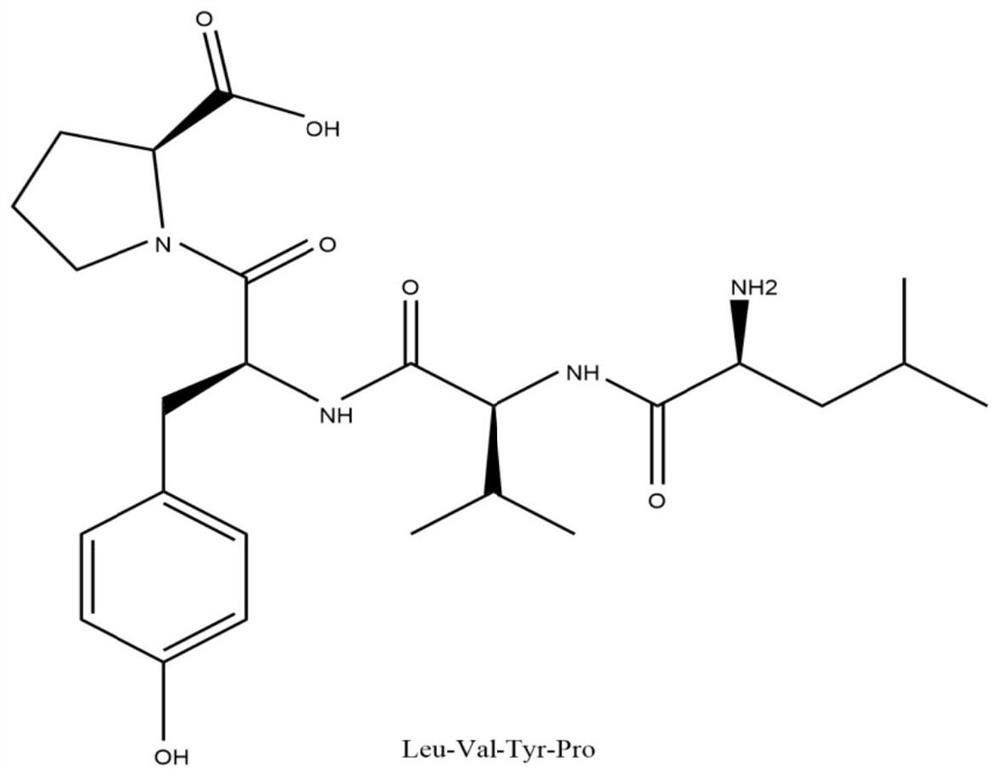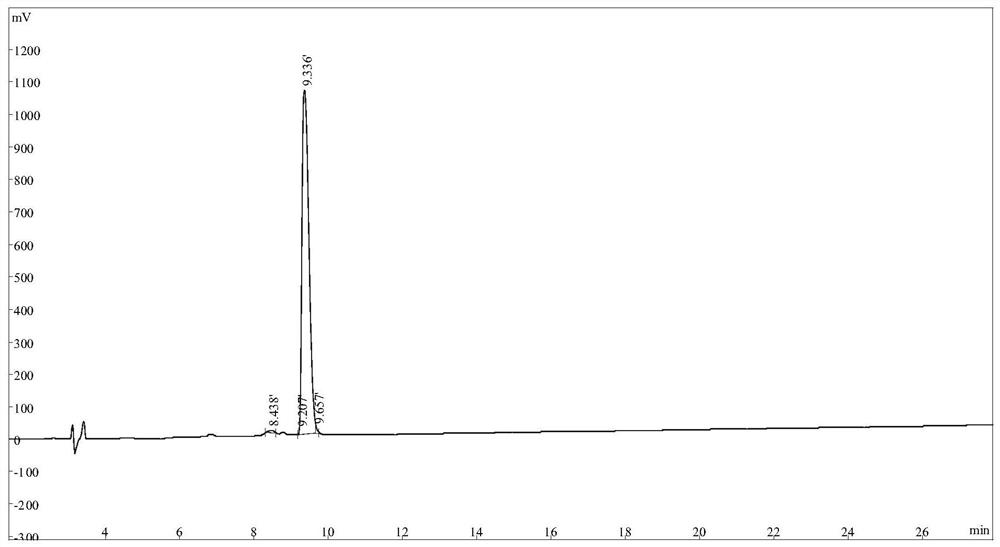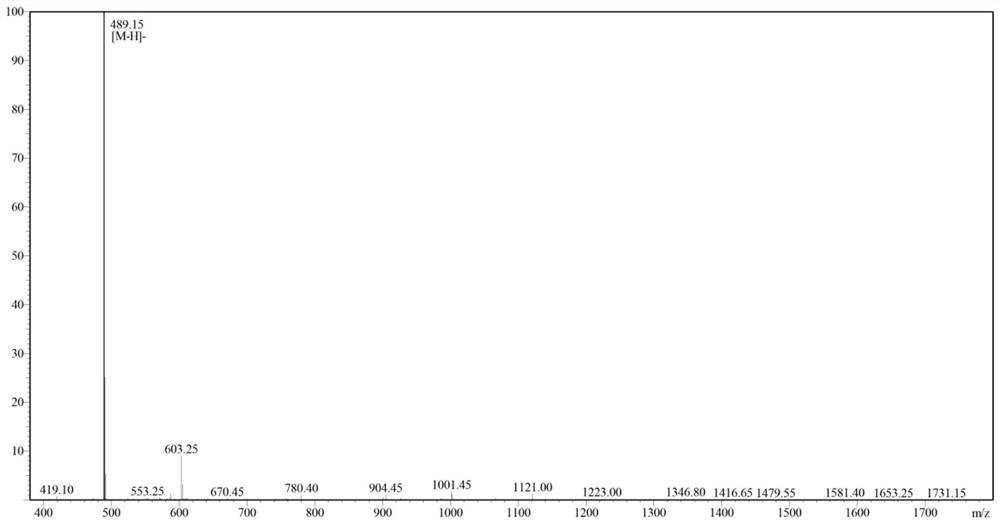A synthetic polypeptide, its synthetic method and application, and a gene encoding the synthetic polypeptide
A technology for synthesizing polypeptides and residues, applied in the field of prevention and treatment of alcoholic liver disease, can solve problems such as toxic and side effects, and achieve the effect of protecting alcoholic liver disease
- Summary
- Abstract
- Description
- Claims
- Application Information
AI Technical Summary
Problems solved by technology
Method used
Image
Examples
Embodiment 1
[0020] Embodiment 1: Polypeptide solid-phase synthesis
[0021] 1. Resin selection
[0022] (1) Adopt the standard fluorenylmethoxycarbonyl (Fmoc) scheme, which selects 0.0125mmol, 2-chlorotrityl chloride resin (2-chlorotrityl chloride resin), according to the sequence characteristics of the amino acid sequence Leu-Val-Tyr-Pro, Add 0.3 mol of the first Fmoc protected amino acid, add DCC and 5% (mass fraction) DMAP into the reactor to shake the reaction, wash the resin with NMP to remove excess protected amino acid. The connection efficiency of the first amino acid to the resin, that is, the coupling rate (as shown in Table 1), was determined.
[0023] (2) Select 0.0125 mmol, 4-(hydroxymethyl) phenoxymethyl polystyrene resin (Wang resin), the method is the same as above, measure the connection efficiency of the first amino acid and the resin, that is, the coupling rate (as shown in Table 1) .
[0024] Table 1
[0025] resin type Coupling rate (%) 2-chlorori...
Embodiment 2
[0030] Embodiment 2: ORAC value determination of synthetic polypeptide
[0031] The reaction was carried out in an environment of 75mmol / L potassium phosphate buffer (pH=7.4), and the specific experimental operation was as follows: 20 μL of synthetic polypeptide, GSH solution and Trolox standard solution (6.25, 12.5, 25, 50 μM), add 200 μL of FL solution (95.68 μmol / mL) to each well, incubate at 37°C for 20 min, then quickly add 20 μL of AAPH solution (119.4 μmol / mL) to each well with a multichannel pipette, and the microwell The plate was placed in a microplate detector at 37°C with an excitation wavelength of 485nm and an emission wavelength of 538nm for continuous measurement, and the fluorescence intensity of each well was measured every 2 minutes for 90 measurements. The ORAC experiment needs to set two control groups, that is, the FL fluorescence natural attenuation control without adding free radicals (-AAPH) and the free radical action control without antioxidants (+AA...
Embodiment 3
[0034] Example 3: Liver-protecting application of synthetic polypeptide acting on ethanol-induced liver cell injury model
[0035] LO2 cells in the logarithmic growth phase were seeded in 96-well cell plates, 5×10 per well 3 cells in CO 2After culturing in the incubator for 24 hours, the experimental group was added with the culture solution with the concentration of synthetic peptides being 0.25, 0.5, 0.75, 1, 1.25 mmol / L respectively, and the blank control group was added with the same amount of culture solution. The incubator continued to cultivate for 24h. Add 20 μL of MTT solution (5 mg / mL) to each well, incubate in an incubator for 4 hours, discard the supernatant, add 150 μL DMSO to each well, and measure the absorbance value OD of each well at a wavelength of 490 nm. Calculate the survival rate of each group of cells after treatment with different ethanol concentrations, such as Figure 4 Shown is the effect of peptides on ethanol-induced LO2 cytotoxicity. One-way A...
PUM
 Login to View More
Login to View More Abstract
Description
Claims
Application Information
 Login to View More
Login to View More - R&D
- Intellectual Property
- Life Sciences
- Materials
- Tech Scout
- Unparalleled Data Quality
- Higher Quality Content
- 60% Fewer Hallucinations
Browse by: Latest US Patents, China's latest patents, Technical Efficacy Thesaurus, Application Domain, Technology Topic, Popular Technical Reports.
© 2025 PatSnap. All rights reserved.Legal|Privacy policy|Modern Slavery Act Transparency Statement|Sitemap|About US| Contact US: help@patsnap.com



